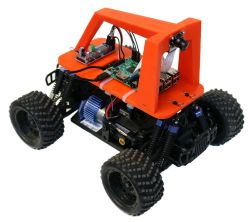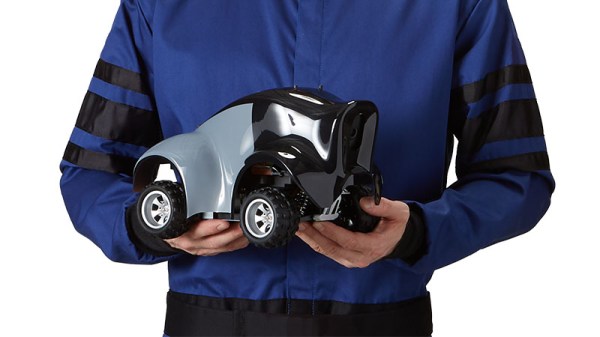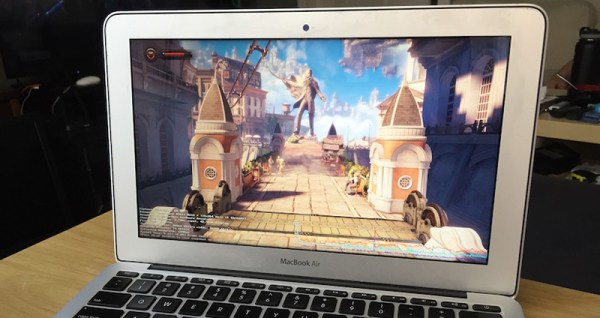As [Matt Stele] prepared to bike a local 300-mile (~480km) race in addition to training, he had to prepare for food. A full day of riding was ahead on gravel trails, and one of the best options for him was Casey’s General Store pizza. However, as it was a race, other riders were much faster than him. So, all the hot slices were gone when he arrived. With the help of a serverless GPS tracker, some cloud lambdas, and some good old-fashioned web scraping, [Matt] had a system that could order him a fresh pizza at the precise moment he needed. Continue reading “Ordering Pizza While Racing”
amazon web services6 Articles
If Coffee == True {
Having a shared coffee maker in the workplace is both a blessing and a curse. It’s nice to have constant access to coffee, but it can be frustrating to find the coffee pot emptied right as you walk in to the break room. To solve this problem in their office, [Vitort] and co. built an IOT solution that notifies everyone of the current coffee status on a Slack channel.
This project wasn’t built just as a convenience for the office, either. It makes extensive use of AWS SNS, the simple notification system from Amazon Web Services because they wanted to learn to use this technology specifically. Besides the notification system, the device itself is based on a NodeMCU/ESP8266, communicating over WiFi, and is a simple push-button design which coffee drinkers push when a fresh pot is made, and then push again when the coffee is empty.
While relatively straightforward, this project is a good one to look at if you’ve been interested in AWS at all, especially the simple notification system. It’s a pretty versatile tool, and all of the code used in the project is available on the project page for your reading pleasure. If you’re more interested in the coffee aspect of this project, we have a special coffee maker for you too.
Buy Or Build An Autonomous Race Car To Take The Checkered Flag
Putting autonomous vehicles on public roads takes major resources beyond most of our means. But we can explore all the same general concepts at a smaller scale by modifying remote-control toy cars, limited only by our individual budgets and skill levels. For those of us whose interest and expertise lie in software, Amazon Web Services just launched AWS DeepRacer: a complete package for exploring machine learning on autonomous vehicles.
At a hardware level, the spec sheet makes it sound like they’ve bolted their AWS DeepLens machine vision computer on an 1/18th scale monster truck chassis. But the hardware is only the tip of the iceberg. The software behind DeepRacer is AWS RoboMaker, a set of tools for applying AWS to robot development. Everything from running digital simulations on AWS to training neural networks on AWS. Don’t know enough about machine learning? No problem! Amazon has also just opened up their internal training curriculum to the world. And to encourage participation, Amazon is running a DeepRacer League with races taking place both digitally online and physically at AWS Summit events around the world. They’ve certainly offered us a full plate at their re:Invent conference this week.
 But maybe someone prefers not to use Amazon, or prefer to build their own hardware, or run their own competitions. Fortunately, Amazon is not the only game in town, merely the latest entry in an existing field. The DeepRacer’s League’s predecessor was the Robocar Rally, and the DeepRacer itself follows the Donkey Car. A do-it-yourself autonomous racing platform we first saw at Bay Area Maker Faire 2017, Donkey Car has since built up its documentation and software tools including a simulator. The default Donkey Car code is fairly specific to the car, but builders are certainly free to use something more general like the open source Robot Operating System and Gazebo robot simulator. (Which is what AWS RoboMaker builds on.)
But maybe someone prefers not to use Amazon, or prefer to build their own hardware, or run their own competitions. Fortunately, Amazon is not the only game in town, merely the latest entry in an existing field. The DeepRacer’s League’s predecessor was the Robocar Rally, and the DeepRacer itself follows the Donkey Car. A do-it-yourself autonomous racing platform we first saw at Bay Area Maker Faire 2017, Donkey Car has since built up its documentation and software tools including a simulator. The default Donkey Car code is fairly specific to the car, but builders are certainly free to use something more general like the open source Robot Operating System and Gazebo robot simulator. (Which is what AWS RoboMaker builds on.)
So if the goal is to start racing little autonomous cars, we have options to buy pre-built hardware or enjoy the flexibility of building our own. Either way, it’s just another example of why this is a great time to get into neural networks, with or without companies like Amazon devising ways to earn our money. Of course, this isn’t the only Amazon project trying to build a business around an idea explored by an existing open source project. We had just talked about their AWS Ground Station offering which covers similar ground (sky?) as our 2014 Hackaday Prize winner SatNOGS.
Automatic MtG Card Sorter Separates Rags From Riches
Like many of us, [Michael Portera] was an avid trading card collector as a kid. Also like many of us, life got in the way, and the collections sat ignored in boxes until our mothers threatened to get rid of them (or skipped the threat altogether and sold them at a garage sale for next to nothing).
[Michael] was recently reunited with his collection of Magic cards, which vary in value as much as baseball or any other kind of collectible card. Now that his Friday nights are otherwise occupied, he decided to sell them off. But first, he had to know how much they’re worth.
Manually sorting and pricing hundreds of cards would take longer than he’d like, so he built a sorter to automate the process. It takes a stack of MtG cards and uses servos and little tires to move them, one by one, into position. A short Python script runs the servos, tells a Raspi 3 camera take a picture of each one, and uploads it to Amazon AWS. Once the pictures are there, [Michael] uses a second script to grab the card title text from the picture and fetch the value through TCGPlayer’s pricing API.
This machine probably isn’t for purists or people with a bunch of originals and re-issues of the same card. We probably should have mentioned that he took out all the Black Lotuses and other obviously valuable cards first. Someone still has to assess the condition of each card, but at two seconds per card, it’s quite the time twister saver. Time Walk past the break to see it in action.
Tired of using dice or scratch paper for your life counter? Summon some Nixie tubes and make a cooler one.
Continue reading “Automatic MtG Card Sorter Separates Rags From Riches”
Motion Detecting Camera Recognizes Humans Using The Cloud
[Mark West] and his wife had a problem, they’d been getting unwanted guests in their garden. Mark’s solution was to come up with a motion activated security camera system that emails him when a human moves in the garden. That’s right, only a human. And to make things more interesting from a technical standpoint, he does much of the processing in the cloud. He sends the cloud a photo with something moving in it, and he’s sent an email only if it has a human in it.
Continue reading “Motion Detecting Camera Recognizes Humans Using The Cloud”
Build An Amazon EC2 Gaming Rig
PC gaming is better than console gaming. Now that we’ve said something controversial enough to meet the comment quota for this post, let’s dig into [Larry]’s Amazon EC2 gaming rig.
A while ago, [Larry] bought a MacBook Air. It’s a great machine for what it is, but it’s not exactly the laptop you want for playing modern AAA games on the go. If you have enough bandwidth and a low enough ping, you can replicated just about everything as an EC2 instance.
[Larry] is using a Windows Server 2012 AMI with a single NVIDIA GRID K520 GPU in his instance. After getting all the security, firewall, and other basic stuff configured, it’s just a matter of installing a specific driver for an NVIDIA Titan. With Steam installed and in-home streaming properly configured it’s time to game.
The performance [Larry] is getting out of this setup is pretty impressive. It’s 60fps, but because he’s streaming all his games to a MacBook Air, he’ll never get 1080p.
If you’re wondering how much this costs, it’s actually not too bad. The first version of [Larry]’s cloud-based gaming system was about $0.54 per hour. For the price of a $1000 battle station, that’s about 1900 hours of gaming, and for the price of a $400 potato, that’s 740 hours of gaming.

















